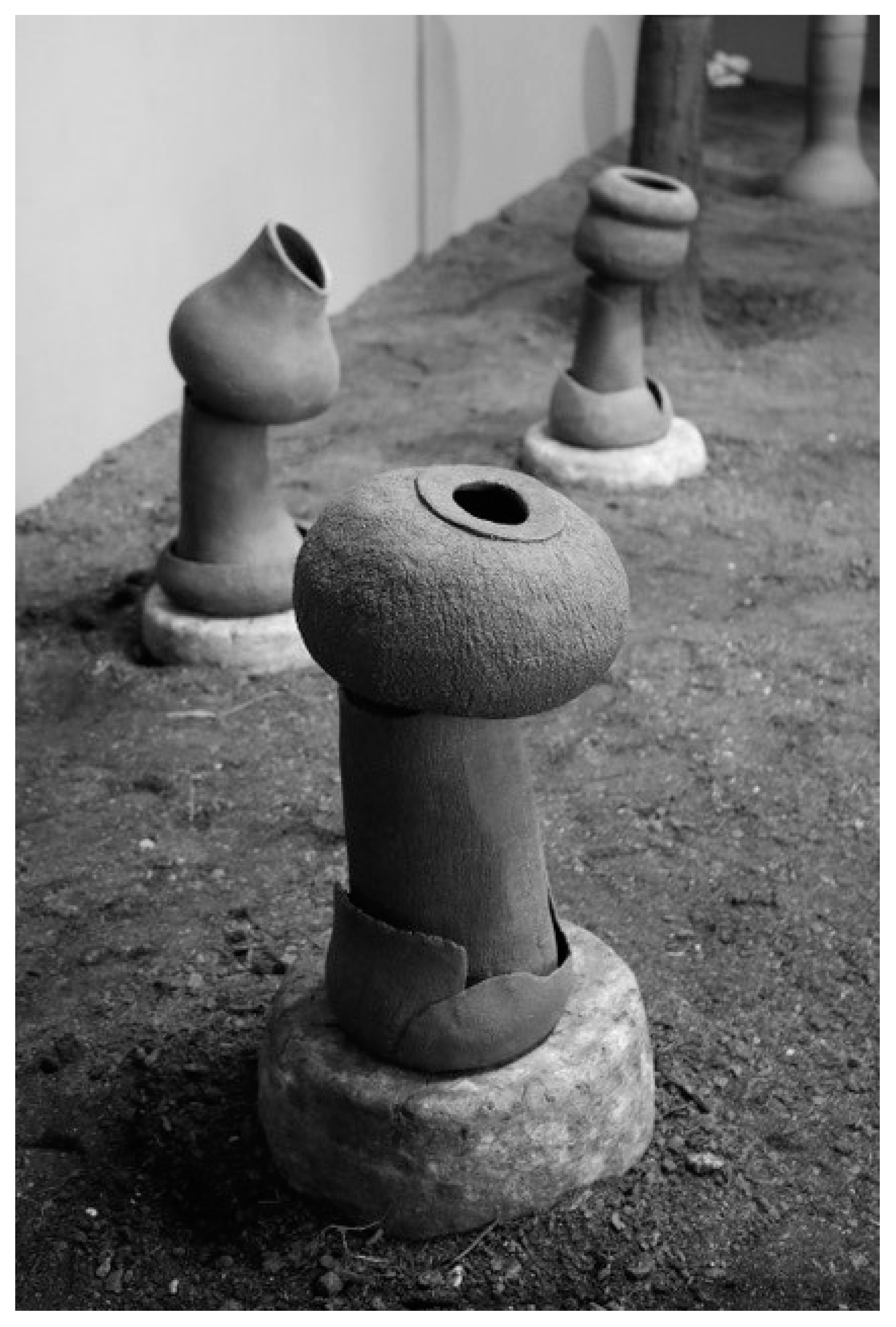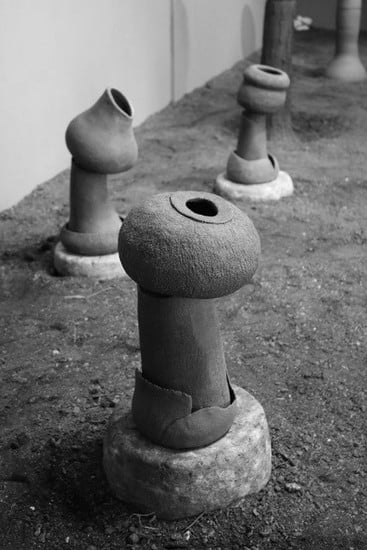Sounds of Soil: A New World of Interactions under Our Feet?
Abstract
1. Background
2. How Sound Might Carry Useful Information for Soil Biota
3. Potential Applications in Biodiversity Monitoring and Agricultural Management
4. Soil Sound Pollution?
5. Approaches for Studying Sound
6. Conclusions
Author Contributions
Funding
Acknowledgments
Conflicts of Interest
References
- Bardgett, R.D.; van der Putten, W.H. Belowground biodiversity and ecosystem functioning. Nature 2014, 515, 505–511. [Google Scholar] [CrossRef] [PubMed]
- Bais, H.P.; Park, S.W.; Weir, T.L.; Callaway, R.M.; Vivanco, J.M. How plants communicate using the underground information superhighway. Trends Plant Sci. 2004, 9, 26–32. [Google Scholar] [CrossRef] [PubMed]
- Lacoste, M.; Ruiz, S.; Or, D. Listening to earthworms burrowing and roots growing—Acoustic signatures of soil biological activity. Sci. Rep. 2018, 8, 2045–2322. [Google Scholar] [CrossRef] [PubMed]
- Mitra, O.; Callaham, M.A.; Smith, M.L.; Yack, J.E. Grunting for worms: Seismic vibrations cause Diplocardia earthworms to emerge from the soil. Biol. Lett. 2009, 5, 16–19. [Google Scholar] [CrossRef] [PubMed]
- Cividini, S.; Montesanto, G. Changes in turn alternation pattern in response to substrate-borne vibrations in terrestrial isopods. Behav. Process. 2018, 146, 27–33. [Google Scholar] [CrossRef] [PubMed]
- Gagliano, M.; Mancuso, S.; Robert, D. Towards understanding plant bioacoustics. Trends Plant Sci. 2012, 17, 323–325. [Google Scholar] [CrossRef] [PubMed]
- Aggio, R.B.M.; Obolonkin, V.; Villas-Boas, S.G. Sonic vibration affects the metabolism of yeast cells growing in liquid culture: A metabolomic study. Metabolomics 2012, 8, 670–678. [Google Scholar] [CrossRef]
- Kothari, V.; Joshi, C.; Patel, P.; Mehta, M.; Dubey, S.; Mishra, B.; Sarvaiya, N. Influence of a mono-frequency sound on bacteria can be a function of the sound-level. bioRxiv 2016. bioRxiv:071746. [Google Scholar] [CrossRef]
- Reguera, G. When microbial conversations get physical. Trends Microbiol. 2011, 19, 105–113. [Google Scholar] [CrossRef] [PubMed]
- Schmieder, S.S.; Stanley, C.E.; Rzepiela, A.; van Swaay, D.; Sabotic, J.; Norrelykke, S.F.; deMello, A.J.; Aebi, M.; Kunzler, M. Bidirectional propagation of signals and nutrients in fungal networks via specialized hyphae. Curr. Biol. 2019, 29, 217–228. [Google Scholar] [CrossRef] [PubMed]
- Matz, C.; Kjelleberg, S. Off the hook—How bacteria survive protozoan grazing. Trends Microbiol. 2005, 13, 302–307. [Google Scholar] [CrossRef] [PubMed]
- Murphy, M.F.; Edwards, T.; Hobbs, G.; Shepherd, J.; Bezombes, F. Acoustic vibration can enhance bacterial biofilm formation. J. Biosci. Bioeng. 2016, 122, 765–770. [Google Scholar] [CrossRef] [PubMed]
- Farina, A. Ecoacoustics: A Quantitative Approach to Investigate the Ecological Role of Environmental Sounds. Mathematics 2019, 7, 21. [Google Scholar] [CrossRef]
- Gibb, R.; Browning, E.; Glover-Kapfer, P.; Jones, K.E. Emerging opportunities and challenges for passive acoustics in ecological assessment and monitoring. Methods Ecol. Evol. 2019, 10, 169–185. [Google Scholar] [CrossRef]
- Pinhas, J.; Soroker, V.; Hetzroni, A.; Mizrach, A.; Teicher, M.; Goldberger, J. Automatic acoustic detection of the red palm weevil. Comput. Electron. Agric. 2008, 63, 131–139. [Google Scholar] [CrossRef]
- Veits, M.; Khait, I.; Obolski, U.; Zinger, E.; Boonman, A.; Goldshtein, A.; Saban, K.; Ben-Dor, U.; Estlein, P.; Kabat, A.; et al. Flowers respond to pollinator sound within minutes by increasing nectar sugar concentration. bioRxiv 2018. bioRxiv:507319. [Google Scholar] [CrossRef] [PubMed]
- Oelze, M.L.; O’Brien, W.D.; Darmody, R.G. Measurement of attenuation and speed of sound in soils. Soil Sci. Soc. Am. J. 2002, 66, 788–796. [Google Scholar] [CrossRef]
- Naderi-Boldaji, M.; Bahrami, M.; Keller, T.; Or, D. Characteristics of acoustic emissions from soil subjected to confined uniaxial compression. Vadose Zone J. 2017, 16. [Google Scholar] [CrossRef]

© 2019 by the authors. Licensee MDPI, Basel, Switzerland. This article is an open access article distributed under the terms and conditions of the Creative Commons Attribution (CC BY) license (http://creativecommons.org/licenses/by/4.0/).
Share and Cite
Rillig, M.C.; Bonneval, K.; Lehmann, J. Sounds of Soil: A New World of Interactions under Our Feet? Soil Syst. 2019, 3, 45. https://doi.org/10.3390/soilsystems3030045
Rillig MC, Bonneval K, Lehmann J. Sounds of Soil: A New World of Interactions under Our Feet? Soil Systems. 2019; 3(3):45. https://doi.org/10.3390/soilsystems3030045
Chicago/Turabian StyleRillig, Matthias C., Karine Bonneval, and Johannes Lehmann. 2019. "Sounds of Soil: A New World of Interactions under Our Feet?" Soil Systems 3, no. 3: 45. https://doi.org/10.3390/soilsystems3030045
APA StyleRillig, M. C., Bonneval, K., & Lehmann, J. (2019). Sounds of Soil: A New World of Interactions under Our Feet? Soil Systems, 3(3), 45. https://doi.org/10.3390/soilsystems3030045




